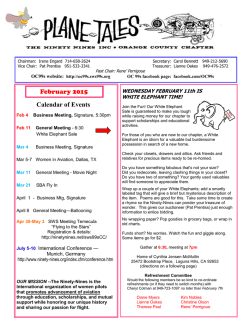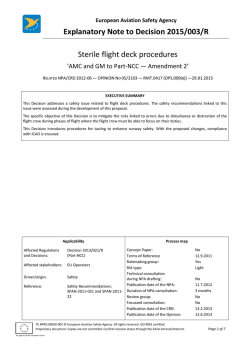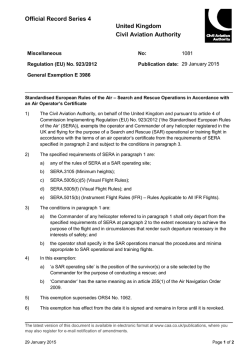
Flight and Exploration
Flight and Exploration Members of the 2015 Inductee class have revolutionized the flight and exploration industries. From pioneering inventions patented during a career at NASA to blazing the trail in aeronautical engineering, George Alcorn and Paul MacCready’s inventive spirits have changed the world through advanced discoveries of space and a redefined look at the world of aviation. Both aviation and exploration are responsible for driving Americans technology advancement and helped the era of innovation to take flight. George Alcorn George Edward Alcorn is an African-American physicist and engineer noted for being part of a four-person team that invented the X-ray spectrometer during his career at NASA Goddard Space Flight Center (GSFC). The imaging X-ray spectrometer was the first spectrometer ever created using the thermomigration of aluminum. The invention changed the way deep space exploration is conducted and provides data to conduct planetary mapping, search for new planets, create star charts and to examine deep space phenomena. In the early 1960s, Alcorn was a young research engineer who performed computer analysis of launch trajectories and orbital mechanics of missiles during his time working for the Space Division of North American Rockwell. He received a NASA-sponsored grant while studying for his Ph.D. and conducted research on negative ion formation as one of the few African Americans to work on such projects at the time. Alcorn went on to work as an advisory engineer at IBM and is regarded as a pioneer in the fabrication of plasma semiconductor devices. In 1978, Alcorn joined NASA where he led teams to develop technologies for space stations such as Freedom and the International Space Station, as well as processes for detecting life in space. He also ran the GSFC Evolution program, which directed the development and operation of the space station. Following that, Alcorn oversaw a space shuttle experiment utilizing Robot Operated Material Processing Systems (ROMPs), which involved the manufacturing of material in the microgravity of space. In addition, Alcorn served as the project manager for the Airborne Lidar Topographical Mapping System (ALTMS) and won an award in 1999 for its development and commercialization – one of only two awards presented to NASA’s 10 centers that year. Paul MacCready Aeronautical engineer Paul MacCready demonstrated talent during his youth as a model airplane builder, and after he grew up, he went to Yale to study mechanical engineering and physics. During his time at school, his studies were interrupted by service in the United States Navy. In the 1950s, he became an accomplished glider pilot and won a series of national and international soaring championships. His experiences led him to invent the Speed Ring Airspeed Selector, or the MacCready Ring, that allows glider pilots to select their optimal flight speed as they move through thermals. MacCready started two companies to pursue weather modifications and alternative energy research before turning to innovative flight research. In an effort to win a prize offered by British industrialist Henry Kremer, MacCready turned to the problem of human-powered flight, designing a vehicle with large, light wings made of transparent Mylar stretched over thin aluminum tubing. He then employed a wing-warping system of control reminiscent of that employed on the original Wright Flyer. In 1977, his bicycle-powered Gossamer Condor became the first such human-powered craft, an accomplishment he bested with his design of the Gossamer Albatross, which crossed the English Channel in 1979. He achieved similar success shortly thereafter with a series of lightweight, piloted aircraft powered by electric motors and photovoltaic cells. In 1980, his Gossamer Penguin became the first aircraft to climb under solar power, and the following year, Solar Challenger crossed the English Channel. He later took the principles he developed with these planes and applied them to his work with NASA on the Helios and Pathfinder projects, but the Gossamer Condor defines his career and inventive spirit. There are electronic versions of the MacCready Ring today that are a part of glide computers and provide audible signals. MacCready’s additional work includes the Sunracer, a solar-powered car; work on General Motors EV-1 electric car prototype; light robotic aircraft; and power sources for such vehicles.
© Copyright 2025



